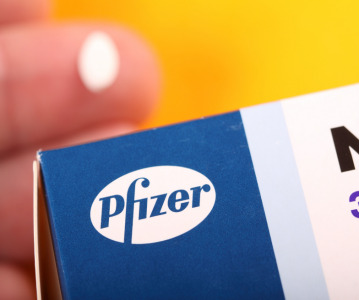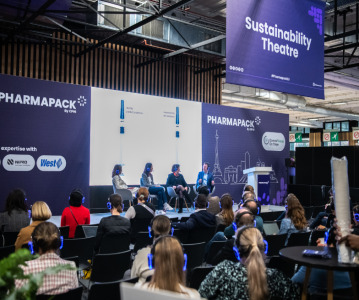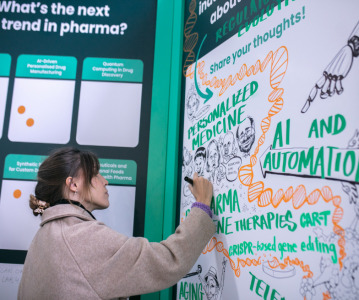CPHI Worldwide experts advocate single reference product for generics and printed personalised formulations

Big data forecast to revolutionise pharma’s operations, everything from outsourcing thorough to drug discovery.
CPHI Worldwide, (#cphiww) organised by UBM EMEA, has announced the findings of Part III of the 2016 CPHI Annual Report, which focuses on growth opportunities over the next 5 years – specifically generics consumption and approval process, the use of big data in pharma and the potential of 3D printed formulations. Four experts – Alan Sheppard, Bikash Chatterjee, Emil Ciurczak and Dilip Shah – examine the implications on clinical trial design, generic drug time-to-market and even the ‘holy grail’ of individualised patient dosage forms.
The overall findings reveal pharma may now be on the cusp of a new age of high tech applications, as new technologies begin to imbed in pharma and the industry re-imagines the art of the possible – with potential new drugs targets identified using far large data sets and computational analysis. In terms of manufacturing, drugs could be individually 3D printed to a patient’s requirements (dose, release profile and combinations). In generics, overall growth is predicted to continue to expand rapidly, but with the caveat that faster approvals are need to improve time-to-market and patient benefit.
Alan Sheppard, Principal, Global Generics at IMS Health, states that we will now see fewer generic opportunities in the short term (2016-2020) due to a lower number of significant small molecules losing exclusivity. The US will understandably remain as the single largest profit generator (particularly in terms of margin); China, however, is set to become the second largest market by 2020. Japan is likely to achieve its 80% generics usage goal ahead of its 2021 target, with Europe remaining the most competitive and leading in the use of biosimilars.
Dilip Shah, CEO at Vision Consulting, however, warns of potential drag factors on the rapid utilisation of generics, imploring the industry to look towards the use of a single reference product for generics (as is the case for approval of patented drugs) – rather than using data from each market, which slows down approvals and increases costs.
Ultimately, Shah advocates that the industry and regulators need to work more closely together, not just in terms of meeting diktats (regulatory standards), but also in terms of training and implementation, and believes that ‘capability building’ and regulatory convergence will begin to occur during the next 3 years.
In the longer term, Emil Ciurczak of Doramaxx Consulting foresees revolutionary changes in how the industry manufacturers final dosage forms for the patient. He predicts that the natural evolution of emerging technologies, such as continuous processing, is the application of 3D printing. Using 3D printing, the industry will be able to individualise dosage forms – printing on demand for orphan drugs – combining two or more active ingredients in a single tablet, and using complex layers to alter the release profile.
In the more immediate future, 3D printing should be used to standardise the United States Pharmacopoeia tester tablets. He added: “3D printing will expand due to the growth of personalized medicines and medical devices. A synergy between 3D and CM is also a potential, where formulations are developed on CM units and produced on 3D units, as needed.”
Finally, Bikash Chatterjee, president and CSO at Pharmatech Associates, envisages some equally transformational applications the emerging field of big data will bring to pharma: "Big data will become the underlying foundation behind all electronic control and governance strategy, from product development and supply change management to business continuity.” In the more immediate future, he sees e-clinical trial applications continuing to expand through 2020 and big data analytics playing an increasing role in the search for the next blockbuster. He concluded: “The next decade of therapeutic drug development will be based upon new and more effective means of data mining and data analytics.”
Chris Kilbee, Group Director Pharma at CPHI Worldwide, said: “In the last few years there has been a notable shift in the industry and increasingly pharma customers, both generic and patented manufactures, are looking for new technologies and approaches – be that regulatory, digital or manufacturing. At CPHI Worldwide we have mirrored this change and each year deliver the latest news and trends through the CPHI Annual Report and our onsite content sessions. As the industry’s annual meeting point, the event is a central node in helping speed up new partnerships to bring these products and technologies to market faster. The discussions had this week will be vital in furthering pharma development and implementing more advanced manufacturing and drug development.”
Related News
-
News Women in Pharma: Career Design for Women
Our monthly Women in Pharma series highlights the influential lives and works of impactful women working across the pharmaceutical industry, and how the industry can work towards making the healthcare industry and workplace more equitable and inclusive... -
News Pfizer may shift production back to US under Trump pharma tariffs
At the 45th TD Cowen annual healthcare conference in Boston, USA, Pfizer CEO Albert Bourla outlined the potential for Pfizer to shift its overseas drug manufacturing back to the US as pharmaceutical industry players weigh their options against Presiden... -
News Women in Pharma: Connecting accessible pharma packaging to patients – a Pharmapack Special
Throughout our Women in Pharma series, we aim to highlight how CPHI events encourage discussions around diversity, equity, and inclusion initiatives in the pharmaceutical industry. -
News CPHI Podcast Series: Packaging expert perspectives at Pharmapack 2025
This month's podcast episode sounds a little different, covering the latest event in Paris – Pharmapack 2025. Digital Editor Lucy Chard speaks to several experts direct from the floor of the show, bringing you right in on the action.&nbs... -
News Closing 2024 with Editors' picks of top articles from the past year
Coming to the end of 2024 and it’s certainly been a busy year, for CPHI and for the rest of the pharmaceutical and healthcare industry. Topics of conversation throughout the last 12 months have been varied, touching on the technical, to the polit... -
News SCHOTT Pharma’s sustainable journey with CPHI
Sustainability is of paramount importance in the pharmaceutical industry. See how a recent partnership between CPHI and SCHOTT Pharma has helped to highlight and accelerate their sustainability journey to reach global goals. -
News CPHI Podcast Series: Investing in a vision for the future of life sciences
In this episode Lucy Chard is joined by Rajiv Khatau to discuss the importance of looking into new therapeutic areas and some of the more niche areas of pharmaceuticals, and investing in the future of the industry. -
News Lessons from CPHI Milan 2024: Sunny Intervals for Pharma Manufacturing?
As the 2024 CPHI conference wrapped up in Milan, we caught up with L.E.K. Consulting – a global strategy consulting firm with deep expertise in pharma manufacturing – to discuss evolving market perspectives and business outlook.
Position your company at the heart of the global Pharma industry with a CPHI Online membership
-
Your products and solutions visible to thousands of visitors within the largest Pharma marketplace
-
Generate high-quality, engaged leads for your business, all year round
-
Promote your business as the industry’s thought-leader by hosting your reports, brochures and videos within your profile
-
Your company’s profile boosted at all participating CPHI events
-
An easy-to-use platform with a detailed dashboard showing your leads and performance







